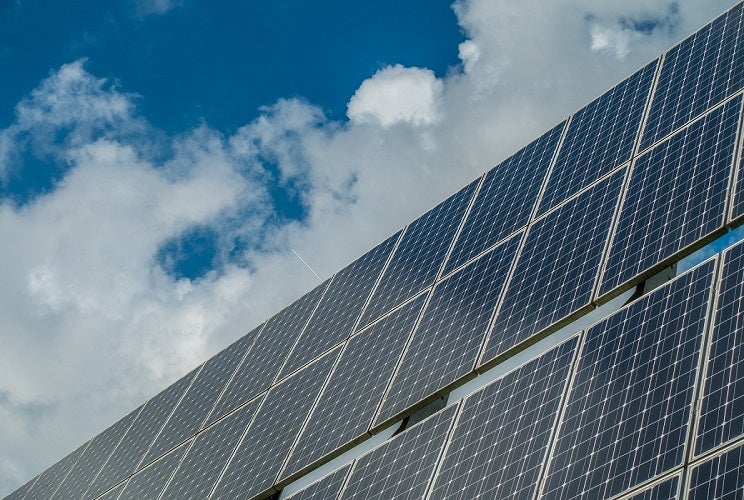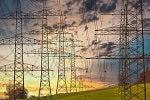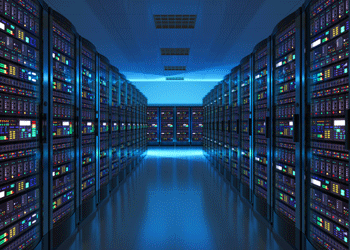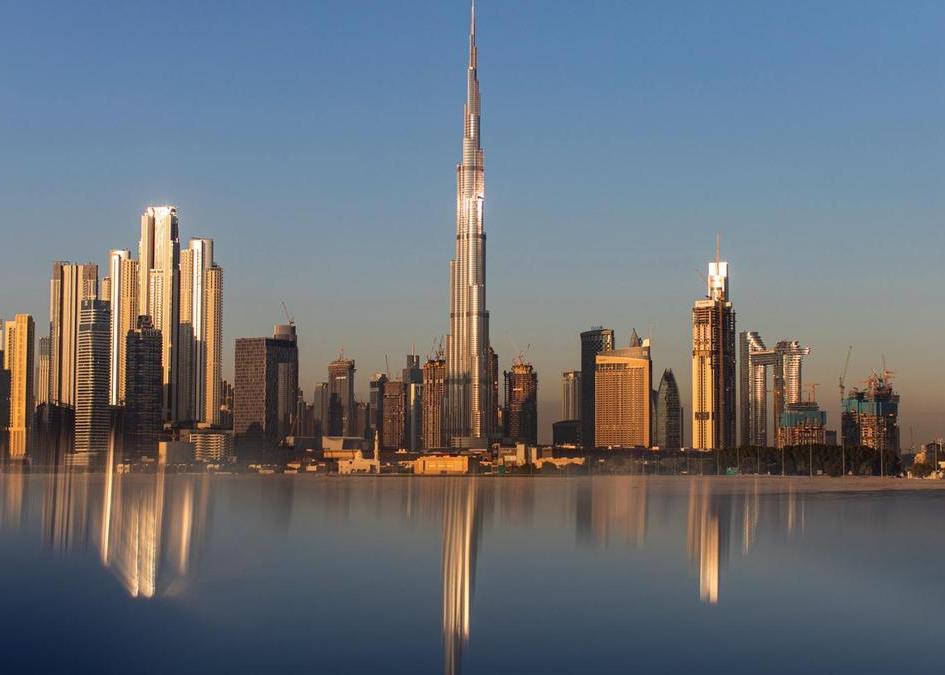Middle East and Africa grows global hydrogen stake
22 February 2024
The Middle East and Africa (MEA) region is emerging as a key player within the global hydrogen market despite holding just an 11% share of current global active capacity.
According to a new GlobalData report, the MEA region has a substantial number of large-scale low-carbon hydrogen projects in the pipeline that will boost its positioning within the global hydrogen market.
The report notes that African countries such as South Africa, Egypt, Mauritania and Morocco aim to capitalise on their vast renewable resources to competitively produce green hydrogen both for domestic use as well as to serve markets experiencing a surge in demand, such as Europe.
In the Middle East, the approach to low-carbon hydrogen is more blended, with companies investing in both blue and green hydrogen.
 Source: GlobalData Analysis, Global Hydrogen Service
Source: GlobalData Analysis, Global Hydrogen Service
The report notes that in African countries, transportation is the key focus demand sector, accounting for up to 6 million tonnes per annum (mtpa) of capacity across 65 production facilities by 2030.
Other projects, particularly those situated strategically in marine port locations, are also gearing up to produce low-carbon fuels for the maritime sector such as South Africa’s Boegoebaai green hydrogen cluster.
In the Middle Eastern context, projects are focusing on ammonia as an end-use sector for low-carbon hydrogen, with this demand sector potentially accounting for up to 49% of active and upcoming hydrogen capacity.
Ammonia is a valuable end-product for fertilisers, plastics and cleaning products as well as a transport and storage medium for hydrogen.
The report adds: “Although the MEA region’s ammonia demand is forecast to remain relatively stable up to 2030, this focus within upcoming hydrogen production capacity indicates the region’s intention to capitalise on increasing demand for low-carbon ammonia in other markets such as Europe and Asia.”
The GlobalData report includes other key observations such as the need to strengthen national strategies, roadmaps and incentives to pave the way for hydrogen technology investments and deployment within the different sectors in which it can be used.
“Numerous countries across the Middle East and Africa are yet to launch these initiatives and so the region’s signals to industry need to be stronger still,” the report says.
There is a heavy emphasis on partnerships within MEA’s regional hydrogen market, with this form of deal accounting for over 70% of total deal activity between January 2022 and February 2024.
According to the report, this trend indicates how companies operating in the MEA region are bidding to capture a greater share of the global hydrogen market through various offtake agreements.
It adds: “The partnerships trend also extends to international strategic alliances, with European institutions and member states being particularly active in securing agreements with emerging hydrogen-producing countries in Africa.”
There are around 70 planned green hydrogen projects planned across the Middle East and North Africa (Mena) region, according to MEED data.
The projects are concentrated mainly in Egypt, Oman, the UAE, Morocco and Saudi Arabia.
Exclusive from Meed
-
 Team offers $c1.29/kWh for 2GW Sadawi solar IPP project
Team offers $c1.29/kWh for 2GW Sadawi solar IPP project21 October 2024
-
 Ashghal tenders sewerage works
Ashghal tenders sewerage works21 October 2024
-
 Saudi Arabia to award 10.9GW of generation capacity
Saudi Arabia to award 10.9GW of generation capacity21 October 2024
-
 Khazna expects to build more 100MW-scale data centres
Khazna expects to build more 100MW-scale data centres21 October 2024
-
 Dubai Municipality seeks Tasreef partner
Dubai Municipality seeks Tasreef partner18 October 2024
All of this is only 1% of what MEED.com has to offer
Subscribe now and unlock all the 153,671 articles on MEED.com
- All the latest news, data, and market intelligence across MENA at your fingerprints
- First-hand updates and inside information on projects, clients and competitors that matter to you
- 20 years' archive of information, data, and news for you to access at your convenience
- Strategize to succeed and minimise risks with timely analysis of current and future market trends

Related Articles
-
 Team offers $c1.29/kWh for 2GW Sadawi solar IPP project
Team offers $c1.29/kWh for 2GW Sadawi solar IPP project21 October 2024
A developer team that includes UAE-based Abu Dhabi Future Energy has submitted the lowest bid for a contract to develop the 2,000MW Al-Sadawi solar independent power project (IPP) in Saudi Arabia.
The consortium, which includes South Korea's Korea Electric Power Corporation (Kepco) and China's GD Power Development, submitted a levelised cost of electricity (LCOE) of hals 4.847 ($c 1.29) a kilowatt-hour for the contract to develop the scheme, which is located in Eastern Province.
The second lowest bidder is a team that includes China's SPIC Huanghe Hydropower Development and France's EDF Renewables, which offered to develop the project for $C1.31/kWh.
Saudi Power Procurement Company (SPPC) received six proposals from companies for the contracts to develop and operate four solar photovoltaic (PV) IPP projects in Saudi Arabia in August.
The projects, which have a total combined capacity of 3,700MW, are being tendered under the fifth procurement round of the kingdom's National Renewable Energy Programme (NREP).
According to SPPC the lowest and second-lowest bidders in the remaining schemes under NREP round five are:
Al-Masaa solar IPP (Hail): 1,000MW
- L1: SPIC/EDF Renewables (France): $c 1.36/kWh
- L2: AlJomaih Energy & Water (local) / TotalEnergies Renewables (France): $c 1.40/kWh
Al-Hinakiyah 2 solar IPP (Medina): 400MW
- L1: SPIC/EDF: $c 1.51/kWh
- L2: Masdar/Kepco/Nesma: $c 1.57/kWh
Rabigh 2 solar IPP (Mecca): 300MW
- L1: AlJomaih Energy & Water / TotalEnergies Renewables: $c 1.78/kWh
- L2: Masdar/Kepco/Nesma: $c 1.89/kWh
Saudi utility developer Acwa Power was not among the 23 companies that were prequalified to bid for the fifth round of NREP projects.
US/India-based Synergy Consulting is providing financial advisory services to SPPC for the NREP fifth-round tender. Germany's Fichtner Consulting is providing technical consultancy services.
The round five solar PV IPPs take the total capacity of publicly tendered renewable energy projects in Saudi Arabia to over 10,300MW. Solar PV IPPs account for 79%, or about 8,100MW, of the total capacity.
Four wind IPPs, one of which has yet to be awarded, account for the remaining capacity.
SPPC is procuring 30% of the kingdom's target renewable energy by 2030. Saudi sovereign wealth vehicle the Public Investment Fund is procuring the rest through the Price Discovery Scheme. The PIF has appointed Acwa Power, which it partly owns, as principal partner for these projects.
The Saudi Energy Ministry recently said that the kingdom plans to procure 20,000MW of renewable energy capacity annually, starting this year and until 2030.
https://image.digitalinsightresearch.in/uploads/NewsArticle/12768211/main.jpg -
 Ashghal tenders sewerage works
Ashghal tenders sewerage works21 October 2024
Qatar’s Public Works Authority (Ashghal) has issued a tender for the construction of the remaining works for two packages of the Al-Kheesa foul sewer network.
According to Ashghal's website, the project packages are called C2018/7 and C2017/118.
It issued the tender on 9 October and expects to receive bids by 10 November. Asghal set the bid bond for the contract at QR1.7m ($467,000).
MEED understands the project is located in the Al-Wajba area and is expected to be awarded in March 2025.
It is one of the most recent infrastructure packages tendered by the authority, which oversaw the multibillion-dollar Local Roads and Drainage Programme (LRDP) in the run-up to the state's hosting of the Fifa World Cup in 2022.
LRDP includes more than 200 road and drainage schemes worth an estimated QR53.2bn ($14.6bn).
In September, Ashghal issued a tender for the construction of a road network in the Izghawa and Al-Themaid areas in the northwest of Doha.
The project involves the construction of a single- and dual-carriageway road network in the area. The overall project is being procured in two work packages.
https://image.digitalinsightresearch.in/uploads/NewsArticle/12767589/main1835.jpg -
 Saudi Arabia to award 10.9GW of generation capacity
Saudi Arabia to award 10.9GW of generation capacity21 October 2024

Principal buyer Saudi Power Procurement Company (SPPC) is expected to award the contracts to develop four gas-fired power plants and four solar photovoltaic (PV) projects over the next few weeks.
MEED understands the intention is to announce the preferred and reserved bidders for each of the contracts, possibly by late October or early November.
SPPC received six proposals from companies for the contracts to develop and operate four solar PV independent power producer (IPP) projects, which have a total combined capacity of 3,700MW, in August.
The project contracts were tendered under the fifth procurement round of the kingdom's National Renewable Energy Programme (NREP).
According to industry sources, the companies that submitted bids for the four PV contracts include:
- EDF Renewables (France) / Etihad Water & Electricity (UAE) / SPIC Huanghe Hydropower Development (China)
- Masdar (UAE) / Nesma Renewable Energy (local) / Korea Electric Power Corporation (South Korea)
- Jinko Power (Hong Kong) / Saudi Electricity Company (local)
- Aljomaih Energy & Water (Jenwa, local) / Total Energies Renewables (France)
- Engie / Kahrabel (France/ UAE)
- Alfanar Company (local)
The following solar PV projects and their capacities make up round five of the NREP:
- Al-Sadawi solar IPP (Eastern Province): 2,000MW
- Al-Mas solar IPP (Hail): 1,000MW
- Al-Hinakiyah 2 solar IPP (Medina): 400MW
- Rabigh 2 solar IPP (Mecca): 300MW
Meanwhile, SPPC received bids on 21 August for the contracts to develop and operate four combined-cycle gas turbine (CCGT) power generation plants in Saudi Arabia with a total combined capacity of 7,200MW.
The four IPP projects, each with a generation capacity of 1,800MW, are:
- Remah 1
- Remah 2
- Al-Nairiyah 1
- Al-Nairiyah 2
Remah 1 and 2, previously known as PP15, will be located in Saudi Arabia’s Central Region, while Al-Nairiyah 1 and 2 will be in the Eastern Region.
According to sources close to the projects, the teams that submitted bids to develop and operate the two CCGT IPPs are:
- Abu Dhabi National Energy Company (Taqa, UAE) / Jera (Japan)
- Acwa Power (local) / Korea Electric Power Corporation (South Korea) / Saudi Electricity Company (local).
https://image.digitalinsightresearch.in/uploads/NewsArticle/12767412/main1232.jpg -
 Khazna expects to build more 100MW-scale data centres
Khazna expects to build more 100MW-scale data centres21 October 2024

Register for MEED's 14-day trial access
The 100MW artificial intelligence (AI)-enhanced data centre being built in the UAE's northern emirate of Ajman is not the last for UAE-based data centre and cloud services provider Khazna Data Centres.
"In the near future, we will be announcing other projects on the same scale or larger than the Ajman data centre," Gregory Jasmin, the firm's senior director of business development strategy, tells MEED.
The executive says the 100MW data centre, once completed, makes Khazna Data Centres "by far the largest data centre developer and operator in the entire Gulf region".
MEED previously reported that London-headquartered construction firm Laing O'Rourke had started construction on Khazna's latest data centre project in Ajman.
The new facility is expected to cost about AED1bn ($272m) and be completed within 15 months. Etihad Water & Electricity Company will supply power to the Ajman data centre.
Jasmin says the company exceeded its capacity target of 300MW by the end of 2023, up from 126MW in early 2022.
The firm has grown significantly since 2020, when it had a capacity of just 40MW, following the 2021 merger of the data centre divisions of Khazna’s parent firm G42 and telecommunications firm e&, previously known as Etisalat.
The company is also expanding its presence in other markets, including Saudi Arabia, Egypt and Kenya.
"By the end of this year and the start of Q1 next year, we will be in many [more] geographies," says Jasmin.
Asked about the top driver for the company's future expansion, the executive says: "AI, AI and more AI."
He adds: "This is based on what the [UAE] leadership wants, which is to have the UAE at the forefront of the AI revolution and with G42, we sit at the core of the infrastructure that is needed for AI.
"For many years, we were always looking to the West to see what we can do, but now we want to take the lead in building the infrastructure that is powering AI here in the UAE as well as globally," says Jasmin.
As things stand, the government's AI push has increased interest in building data centre capacity, if not changed the landscape entirely for Khazna.
In June 2022, the firm's CEO Hassan Al-Naqbi told MEED that increased digitalisation by government entities and enterprises, as well as the adoption of school- and work-from-home practices, mean that the Middle East region will continue to drive double-digit growth in demand for data centre services.
In addition, the general mandate for regional governments to retain data within their national jurisdictions is also a major driver for the growth of data centre services in the region, which was nearly double the global average at the time.
Green data centre
Known for being a major energy consumer, there is a growing awareness of how data centres can be made more sustainable or greener, particularly due to the cooling requirements, which are especially crucial in the Gulf region.
Jasmin says in some countries, such as Kenya, a 100% renewable energy powered data centre is now feasible.
Khazna's facility in Kenya is powered by 100% renewable geothermal energy and can go from a scale of 100MW up to 1GW, because "we are located in a green energy park that is fed by renewable energy currently at 900MW, but with the potential to grow to up to 10GW".
Related reads:
https://image.digitalinsightresearch.in/uploads/NewsArticle/12767183/main.gif -
 Dubai Municipality seeks Tasreef partner
Dubai Municipality seeks Tasreef partner18 October 2024
Register for MEED's 14-day trial access
Dubai Municipality has issued a tender notice for a delivery partner to develop and implement a model tailored to the needs of the Tasreef programme, Dubai's planned AED30bn ($8.16bn) rainwater drainage network project.
MEED understands that the request for proposals targets technical and engineering advisory companies.
Dubai Municipality expects to receive bids by 7 November, Fahad Al-Awadhi, director of drainage system and recycled water projects department, Dubai Municipality, said in a recent social media post.
According to Al-Awadhi, the Tasreef programme consists of three streamlines to enhance the effectiveness of Dubai's stormwater system:
- Improvement of infiltration and sustainable drainage systems and artificial intelligence (AI) applications
- Upgrade of stormwater systems in Deira, Bur Dubai and Jebel Ali
- Proposed stormwater tunnels in Deira and Bur Dubai, as well as link tunnels in Jebel Ali
In addition, the Tasreef programme will address storm event management, including raising awareness about storm impacts, implementing proactive risk control measures, developing marketing and procurement strategies and establishing communication plans.
Al-Awadhi added: "The proposed stormwater tunnels, links and terminal pump stations aim to enhance the stormwater network’s capacity by 700% to handle up to 65 millimetres of rainfall per day. This programme represents the largest rainwater collection project in a single system within the region."
An early study is under way for Tasreef, which Sheikh Mohammed Bin Rashid Al-Maktoum, UAE Vice President and Prime Minister and Ruler of Dubai, approved in June.
A source familiar with the project said that Dubai Municipality is inclined to consider a public-private partnership (PPP) procurement model for the project.
Sheikh Mohammed's approval of Tasreef came two months after a storm in April inundated Dubai, causing widespread flooding and damage to infrastructure and property in certain areas.
The project will raise the emirate-wide drainage network’s capacity to more than 20 million cubic metres of water a day. It is hoped that it will meet Dubai's needs for the next 100 years.
The project is a continuation of drainage projects launched by Dubai in 2019, covering the Expo Dubai area, Al-Maktoum International Airport City and Jebel Ali.
The rainwater drainage capacity through tunnels will reach 20 million cubic metres a day, with a flow capacity of 230 cubic metres a second.
According to data from regional projects tracker MEED Projects, the Dubai Municipality Deep Tunnel Storm Water System (DTSWS) was first announced in 2014.
It has several components, and the first two packages covering Jebel Ali were awarded in 2017 and 2018 and completed in 2022.
The remaining packages of the master plan were on hold before the government's announcement on 24 June.
The DTSWS project is separate from the Dubai Strategic Sewage Tunnels project, which is being developed under a PPP contracting model.
https://image.digitalinsightresearch.in/uploads/NewsArticle/12753886/main.jpg

